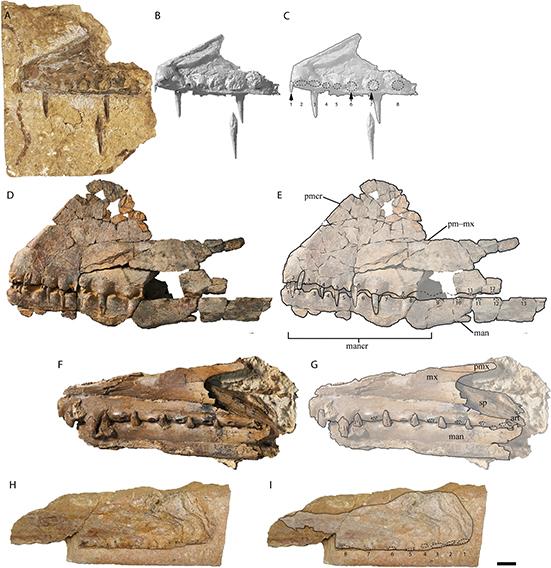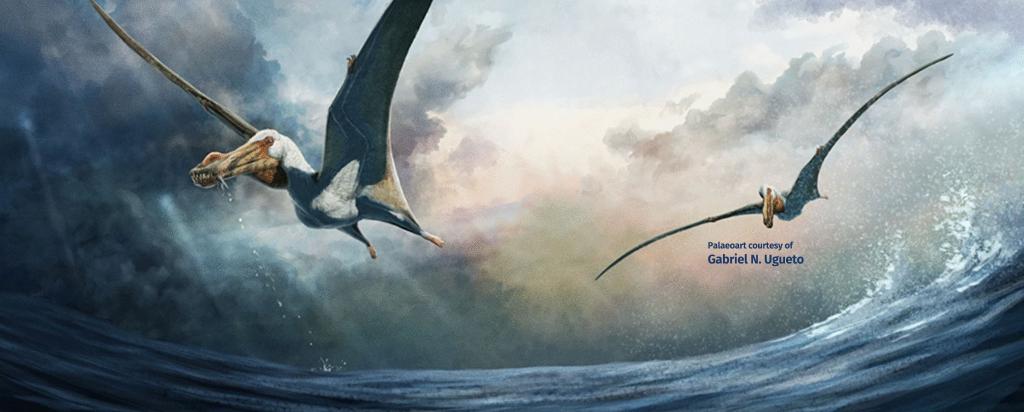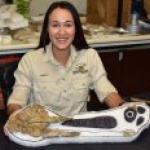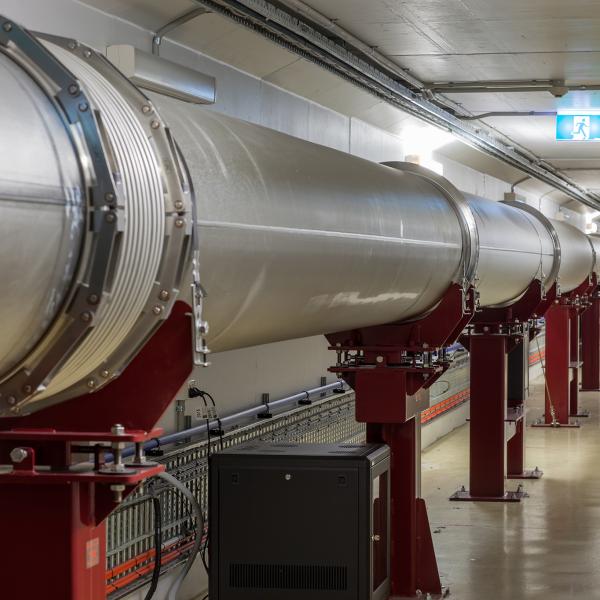

Published on the 3rd July 2024 by ANSTO Staff
An international team of academic researchers led by Curtin University have provided a description of a new species of pterosaur, a flying reptile, in the journal Scientific Reports found in Australia.
The fossilised reptile, Haliskia peterseni, Petersen’s sea phantom, which was found by and extracted by fossil enthusiast Kevin Petersen is believed to have lived around 100 million years ago in eastern Gondwana (now outside Richmond in Central Queensland).
In a report in the Conversation, the lead author of the paper, Curtin University PhD candidate, Adele Pentland described the fossil as only the second partial pterosaur skeleton ever found in Australia.
The pterosaur had a lightweight skeleton with hollow thin-walled bones for flight, that were often not preserved.
The preserved bones included a partial skull and complete mandible, bones that support the tongue and larynx, and parts of the skeleton below the head.
The bones and teeth suggest Petersen’s Sea phantom consumed fish and squid from a shallow inland sea known as Eromanga.
Senior Instrument scientist Dr Joseph Bevitt assisted the team with an analysis using thermal neutron tomography on the instrument Dingo at the Australian Centre for Neutron Scattering and complementary X-ray CT using the Imaging and Medical beamline at the Australian Synchrotron.
“Neutrons achieved better penetration and contrast for this specimen and could provide a three-dimensional surface render of the bones embedded in rock,” said Dr Bevitt, who has considerable experience in imaging the bones of ancient creatures who once inhabited Australia.
The species has been placed in the fish-eating Anhangueria family with other pterosaur fossils from Australia.
“This is a particularly exciting specimen because of its rarity and the information it provides about the success of Anhangueria during the latest Early Cretaceous period.”
In their paper, the authors observed that the find suggested the Australian forms of the family were more diverse and palaeobiogeographically complex than previously recognised.
“Basically, Anhangueria were more widespread and diverse than previously recognised, as so few bones have been found in Australia, New Zealand, Antarctica, India, Pakistan, and Madagascar - countries that were joined at the time as eastern Gondwana,” explained Dr Bevitt.
However, the precise position of the Australian Anhanguerians in the evolutionary history remains unclear, as does the true diversity of pterodactyloids from the Cretaceous of northeast Australia.
Other collaborating institutions included Monash University, Universidade Federal do Rio de Janeiro (Brazil), Universidade Regional do Cariri (Brazil) and Museums Victoria Research Institute.
https://doi.org/10.1038/s41598-024-60889-8
Dr Bevitt has recently returned from a dinosaur expedition to the United States, not searching for fossils but reporting on how nuclear and accelerator techniques can support investigations.
He delivered the opening keynote address at the World Congress on Neutron Radiography in Idaho, in which he explained how powerful neutron and synchrotron X-ray imaging techniques provide information on palaeontological samples and cultural heritage materials.
While in the US, Dr Bevitt also spoke at the North American Palaeontology Conference in Michigan about the suite of instruments and techniques available at ANSTO.
“Part of the message was that we are seeking new collaborations. We are considered global leaders in this area, so the interest was high in some of our recent studies on the world’s oldest fossil heart found in a Gogo fish, and the Cretaceous crocodile that ate a juvenile dinosaur. It was also an opportunity to meet with some of my existing partners in Canada and the US.”
“Of course, I couldn’t resist visiting nearby well-known museum that hold palaeontological collections, including the incredible American Museum of Natural History, where I had my own ‘night at the museum’.”
“I also took a side excursion to the Fossil Butte National Monument in Wyoming, to see the amazingly preserved fossils of the 50- million-year-old freshwater Green River Fossil Lake beds. This site captures the best paleontological record of aquatic life at the time, anywhere in the world. Excavations at this national park, and at nearby commercial quarries on private lands have excavated millions of fossils since the mid-1800s, yielding many species of fish, horses, bats, turtles, birds, crocodiles and plants.”

A display of some of Dr Bevitt’s work on fossils is currently on display (pictured above) at Blacktown’s Max Webber Library, until 24th July 2024.





